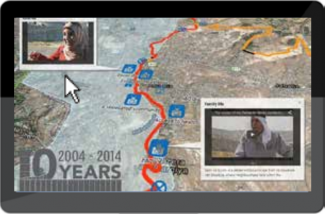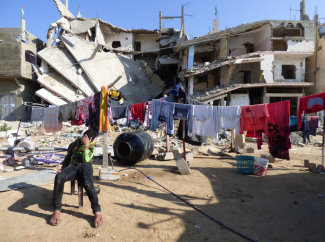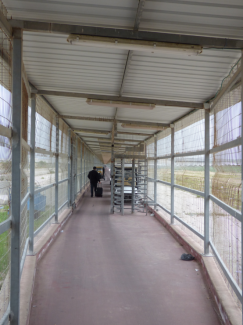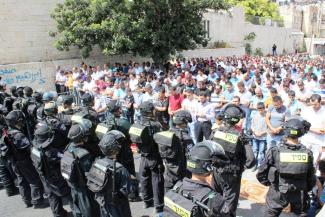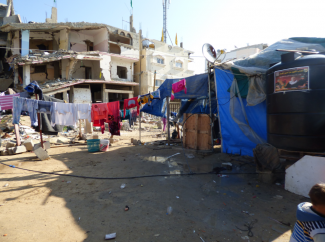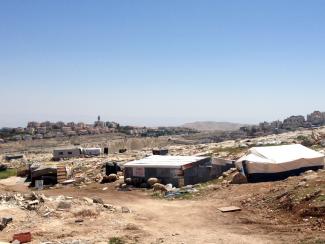This year marked the tenth anniversary of the 2004 International Court of Justice (ICJ) Advisory Opinion on the Legal Consequences of the Construction of a Wall in the Occupied Palestinian Territory. Throughout the year, OCHA oPt has been active in drawing attention to the ongoing impact of the Barrier by focusing on the stories of those affected. In East Jerusalem, OCHA oPt is using an interactive map to tell the story of families from one part of the city who have been physically divided since the Barrier construction.
The Monthly Humanitarian Bulletin | December 2014
In this document
This month’s Bulletin highlights some of the key trends and issues of humanitarian concern throughout 2014 in the occupied Palestinian territory (oPt). In the Gaza Strip the overall situation remains extremely fragile, marked by slow progress in the reconstruction of homes and infrastructure destroyed during the JulyAugust hostilities, and compounded by the ongoing energy crisis and growing internal political tensions.
The upward trend registered in previous years in the number of Palestinians allowed to exit Gaza through the Erez crossing with Israel (mainly to the West Bank) continued into 2014, with a 24 per cent increase compared with 2013. This was particularly pronounced in the second half of the year following the relaxation of Israeli eligibility criteria for exit permits (see box below) in the wake of the July-August hostilities. Despite this improvement, access continues to be largely restricted to medical cases and their escorts, businessmen and traders, and staff of international organizations, with movement to the West Bank denied to most Palestinians from Gaza
Clashes between Palestinian civilians and Israeli forces continued throughout December, making 2014 one of the most violent years of the past decade, not only in Gaza, but also in the West Bank. During 2014, Israeli forces killed 56 Palestinians and injured another 5,868 in various incidents across the West Bank, including East Jerusalem, as well as in a few incidents in West Jerusalem. The number of injuries is the highest since 2005, when OCHA began recording conflict-related casualties, while the number of fatalities is the highest since 2007.
Nearly 40,000 individuals (out of approximately 100,000) whose homes were damaged or destroyed during the summer hostilities have been cleared to purchase restricted construction materials under the temporary Gaza Reconstruction Mechanism (GRM), as of 5 January. This represents a fivefold increase compared with the previous month.
In December, another step was taken in the Israeli plan to “relocate” around 7,000 Palestinian Bedouin currently residing in 46 small residential areas in Area C in the central West Bank. The time period allocated by the Israeli Civil Administration (ICA) for the filing of objections to outline plans for the establishment of a Bedouin town in An Nuwei’ma, next to Jericho city, the largest of the three relocation sites identified by the Israeli authorities, has now expired.
